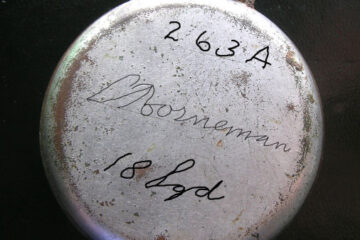In the immediate post-War World years, refugees from war-torn Europe were resettled in different places across Australia. By 1949, it is estimated that one-tenth of the American/Dutch/Australian Army’s Camp Columbia area became the Wacol East Displaced Persons Holding Camp.
In the early 1950s the camp was developed to become the Wacol Migrant Centre, the biggest in Queensland. In 1952, the 1600 capacity of the camp was exceeded, reaching close to 2000.
By the 1980s the converted timber Army huts were aging and a different model for receiving immigrants was evolving. The Wacol Migrant Centre and the disused Willie Mackenzie Hostel were closed in 1987. The Prisons Department took over the site and the Arthur Gorrie Correctional Centre was opened in 1992.
Many Dutch people were among the post-war migrants.
In 2001 the idea was born to create a commemorative symbol of the Wacol Migrant Centre and the Federal Government financed the publication of a book with some 150 interviews with refugees and migrants. Among them 27 interviews with Dutch migrants. The interviews with the Dutch people have been republished in the DACC Hub with the permission from the Federal Government, the copyright holder. The are listed in order of arrival.
Other links:
Netherlands Association of Queensland and Dutch Shop De Kruidenier.
Prins Willem Alexander Retirement Village
Michael Strik
Michael Strik
Johanna Edwards
Annie and Joop Vierveyzer
Matha Johanna Fuchshuber – nee Van Lunteren
Sonja Mullenberg – nee van den Berg
Ben Dokter
Harmina Dijk – nee Pesman
Helena Koning
Elisabeth Meuleman
Herma Long
Theo Sloots Jnr
Nel Bruyniks
Han Spykerboer
Ruth van Lunteren – nee Muller
Rolf Bierman
Anthony and Elizabeth Schagen
Jacoba Oliver
Catherina Vullers
Herman Wichgers
Rob-Jan and Jacomiene Mijnarends
Corry de Haas
Kitty Cillikens
Anelies Zeissink
Lily Podger – nee Kuiper
Carel Vogelsang
Andreas Flach
Ken and Els Gray


